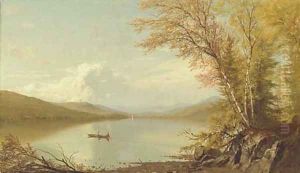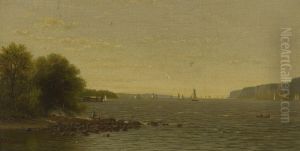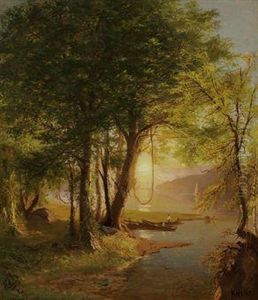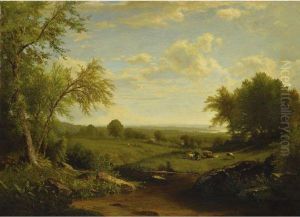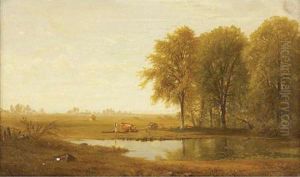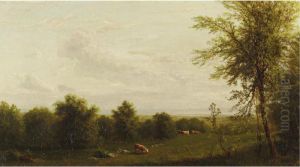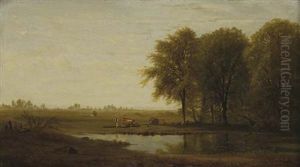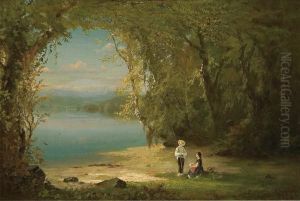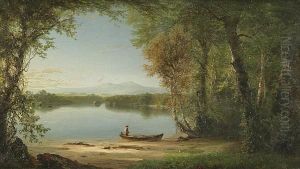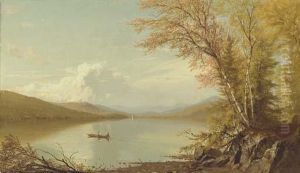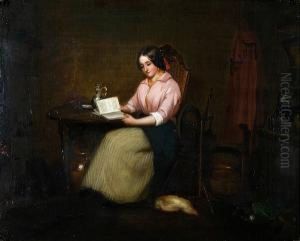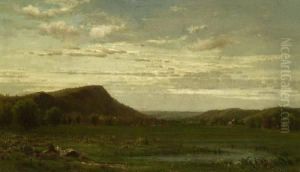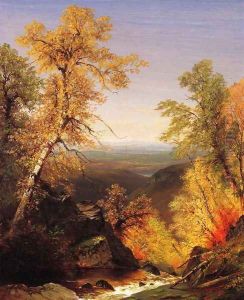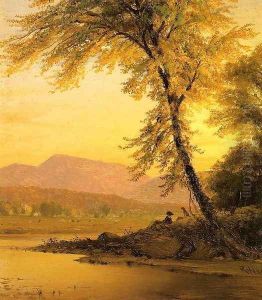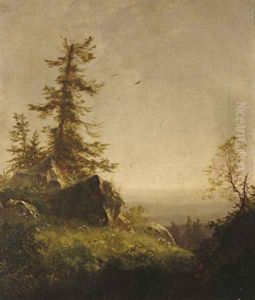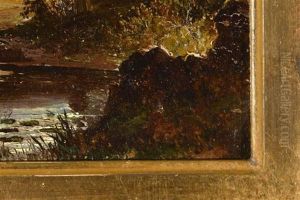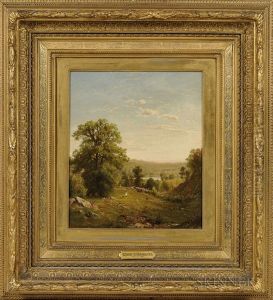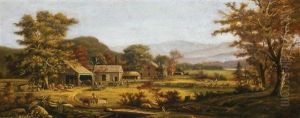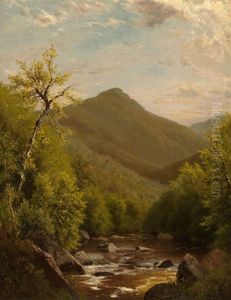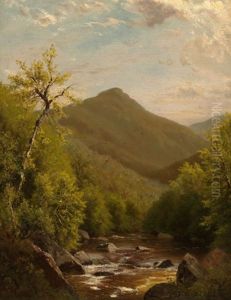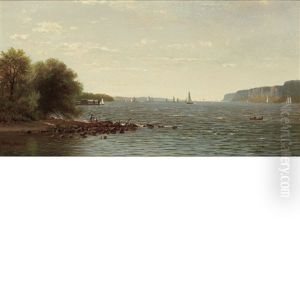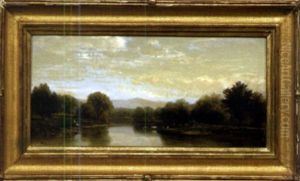Richard William Hubbard Paintings
Richard William Hubbard was an American landscape painter notable for his contributions to the Hudson River School, a mid-19th century American art movement. Born on September 24, 1816, in Middletown, Connecticut, Hubbard developed an early interest in art, which was nurtured through his education and travels.
In his early years, Hubbard moved to New York City, where he became actively involved in the city's burgeoning art scene. He studied with Samuel F.B. Morse, who was not only an inventor but also a respected painter, particularly known for his contributions to American portraiture and landscape painting. Morse's influence is evident in Hubbard's early works, which combine meticulous detail with a keen observation of natural light and shadow, characteristics that would define Hubbard's style throughout his career.
Hubbard traveled extensively in Europe in the late 1830s and early 1840s, a common practice among artists of his time who sought inspiration and education from the Old World masters. Upon his return to the United States, Hubbard became a part of the Hudson River School, aligning himself with artists like Thomas Cole and Frederic Edwin Church. These artists shared a common interest in portraying the American landscape in a manner that emphasized its majesty, beauty, and divine qualities. Hubbard's works from this period often depict serene and idyllic landscapes, imbued with a sense of tranquility and the sublime, capturing the unspoiled beauty of the American Northeast and its changing seasons.
Throughout his career, Hubbard exhibited his works at various prestigious venues, including the National Academy of Design, where he became an associate member in 1838 and a full Academician in 1847. His paintings were also shown at the Boston Athenæum and the Pennsylvania Academy of the Fine Arts, among other institutions.
Despite his association with the Hudson River School, Hubbard's style evolved over time, showing an increasing interest in atmospheric effects and a more nuanced use of color, likely influenced by the emerging Luminism style. His later works are characterized by a softer palette and a more contemplative approach to landscape painting, focusing on the harmonious interplay between light and water.
Richard William Hubbard passed away on May 14, 1888, in New York City. Today, his works are held in several prestigious collections and continue to be appreciated for their contribution to American landscape painting and their embodiment of the Hudson River School's ideals.
